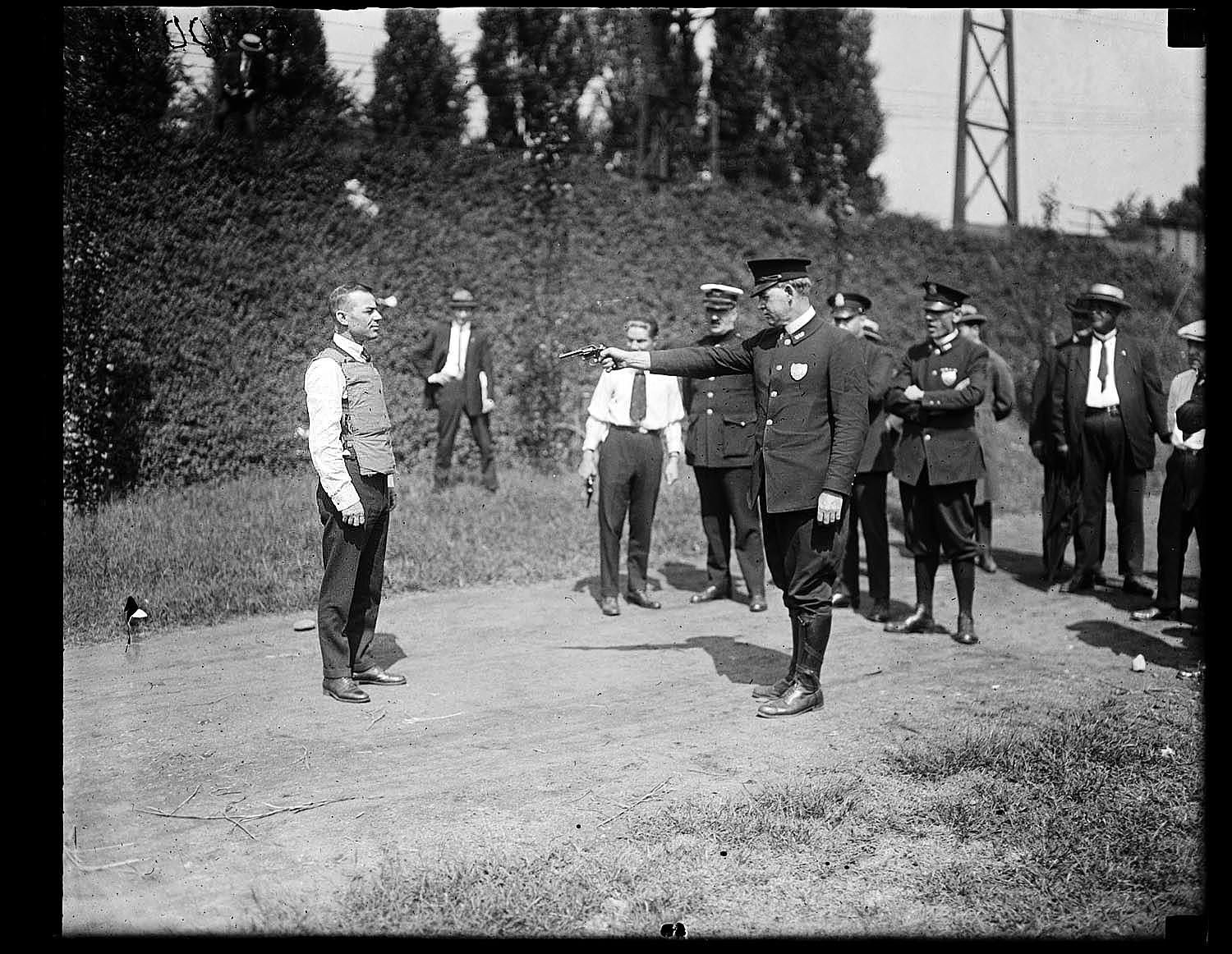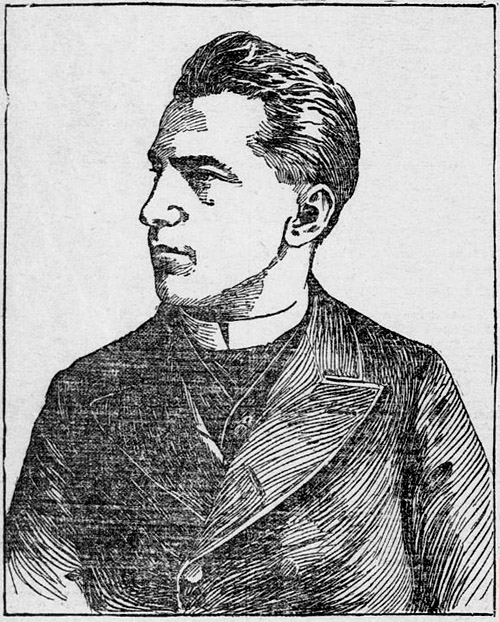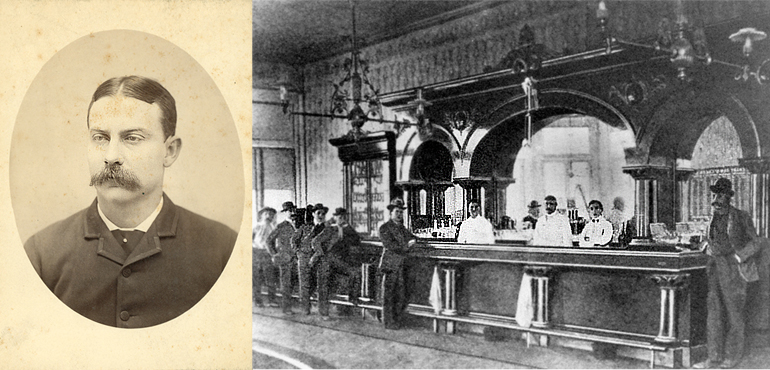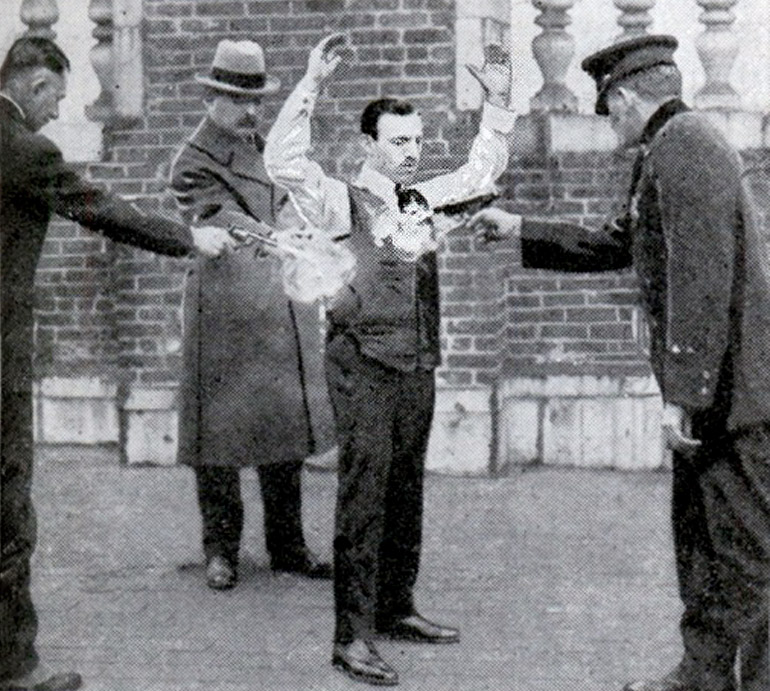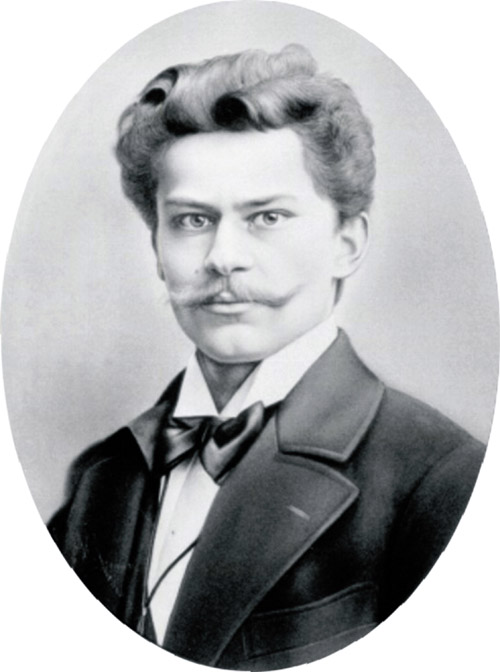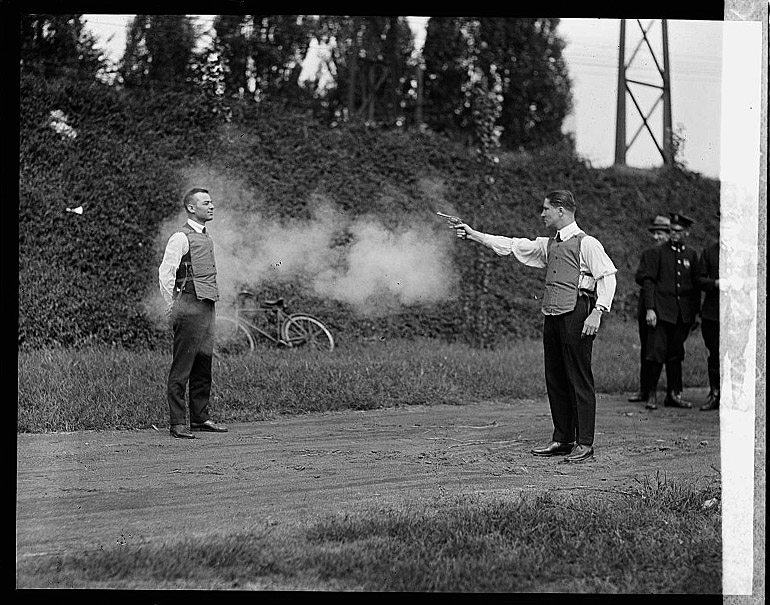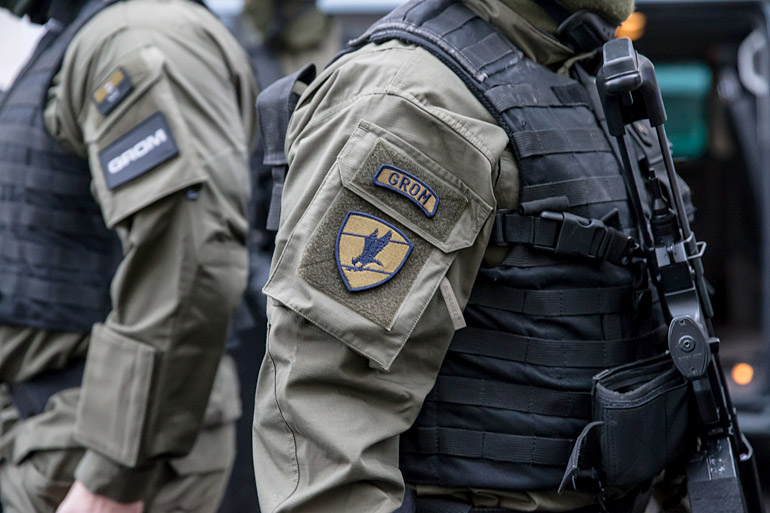SobieskiSavedEurope
Gold Member
- Thread starter
- Banned
- #541
Witold Gombrowicz, and to Hell with Culture
Benjamin Paloff
Witold Gombrowicz is probably the most important twentieth-century novelist most Western readers have never heard of, which is to say that he is the kind of writer whose following consists largely of other writers, whose faith in Gombrowicz's under-recognized genius has led them to shower him with superlatives. Susan Sontag, in her introduction to the recent English translation of Ferdydurke, his ironic masterpiece, calls him brilliant. John Updike takes this praise one step further, noting that Gombrowicz is "one of the profoundest of late moderns." Milan Kundera ranks him among Joyce and Proust as one of the seminal figures in modern literature. His writings are beloved in France, where they have long been available in competent translations, and where Gombrowicz himself spent the last years of his life. And in his native Poland, Gombrowicz remains something of a cultural legend almost thirty-five years after his death; in a publishing market that frequently casts its best literature out of print, all Gombrowicz's books are easily available, as are any number of volumes about his life and work. The official website of Radom, a lackluster city in central Poland near the small town where Gombrowicz was born, proudly proclaims him alongside Jan Kochanowski (an excellent Renaissance poet) and director Andrzej Wajda as having lived there (or at least as having had some association with the area, which is important enough for the local cultural imagination). And the Polish Ministry of Culture has officially proclaimed 2004 "The Year of Gombrowicz," which will include a plethora of conferences and cultural events marking the one hundredth anniversary of the author's birth.
It's just the sort of thing that Gombrowicz-or a certain side of him-would abhor. From his very first book, a collection of short stories called Memoirs from a Time of Immaturity (1933; later entitled Bakakaj, and including the story "The Rat"), Gombrowicz raged against what he saw as the aristocratic conservatism of Polish culture, the formality of men bowing and kissing ladies' hands in greeting, the general insistence on how Poland's grand destiny had been sidetracked by a century of partition and occupation, and perhaps most of all the uncritical reverence for such cultural heroes as Copernicus (of questionable nationality), Mickiewicz (the national poet, actually born in Lithuania), and Chopin (half-Polish, who spent most of his life in France). Early in his three-volume Diary, itself an extraordinary record of an author at play, Gombrowicz asks, "What does Mrs. Smith have in common with Chopin?" Next to nothing, but that's not even the worst of it. What Gombrowicz found truly frustrating-even dangerous-is how his country's inferiority complex, its need to remind the world time and again how Polish culture is just as great-nay, greater-than that of the West, cripples the individual, forces him to memorize verses and dates and to behave in a manner befitting the great civilization that is Poland. Or at least this is the attitude represented in the preponderance of Gombrowicz's work, any treatment of which is obliged to bear the disclaimer that you can never fully trust an author so fond of irony and masks. Indeed, writing about Gombrowicz's attitude toward Polish culture is kind of like writing an obituary for someone who didn't believe in death.
That said, the individual's battle against the strictures of culture remained a lifelong obsession for Gombrowicz. In his early work in particular, this theme manifests itself as a battle between maturity-that is, the social expectation that the individual will behave according to a given code, a superego imposed from above-and "immaturity," the freedom to do as one will and, in general, not to give a damn. This is the central conflict in "The Rat": a retired judge captures a troublesome vagabond and does his best to rein in his "particularly massive nature," which offends the judge's sense of order and propriety. In "The Honorable Kraykowski's Dancer," the story that opens the same collection, the protagonist becomes so obsessed with the regal manners of an attorney and his wife that he does everything he can to subvert the lawyer's individuality, for example, by paying for his daily pastries in advance. "Imagine this," he addresses the reader conspiratorially. "A lawyer comes out of a public restroom, reaches for his fifteen cents, and learns that the bill has already been settled. How does he feel then?" And famously, in Ferdydurke (1937), a thirty-year-old man is enslaved by his old schoolmaster and thrown back into the classroom, where he finds it impossible to gain freedom without first enduring endless humiliations. In each of these instances, no one really needs to bother about the totalitarianism that will later occupy Poland and preoccupy so much of its literature. For Gombrowicz, culture itself, with its insistence on acceptable norms, is plenty totalitarian as it is, thank you very much.
Which brings us to the curious irony of the author's fate. In 1939, following the publication of Memoirs from a Time of Immaturity, a play called Ivona, Princess of Burgundy, and Ferdydurke (plus, truth be told, a second novel, The Possessed, which appeared under a pseudonym and wasn't acknowledged by its author for thirty years), Gombrowicz was invited to enjoy the maiden voyage of a cruise ship across the Atlantic. He set sail and arrived in Buenos Aires. Then the Nazis invaded Poland, followed by the Soviets, and that was that: Gombrowicz was in Argentina with no money and no Spanish. He remained there for over two decades, utterly impoverished, relying for his survival on a contingent of Polish expatriates who were, like most communities in emigration, more conservative than his critics back in Poland. This is the subject of his hilarious 1953 novel Trans-Atlantyk,which features a protagonist named Witold Gombrowicz and is written in a specialized narrative style of the old Polish nobility, a wholly appropriate medium for the stuffy circumstances in which the author found himself.
Yes, appropriate. In fact, Gombrowicz's prose has never been as absurd as journalistic reductions would have it, since it is always-both thematically and linguistically-a consistent, even systematic response to a set of cultural, philosophical, and psychological problems. "The Rat" provides an excellent case-in-point: it is the language of obsession and fetish, with its concatenated synonyms and spontaneous singing, its repetition and play. The writing is at once extremely poetic and anti-conventional, a stylistically "mature" prose expressing the lushness and buoyancy of immaturity. Gombrowicz's early critics attacked his lack of restraint, his sometimes childlike delight in language, his flirtation with excess and arbitrariness. (The collection's second title, Bakakaj, is itself arbitrarily chosen; Gombrowicz took the name from one of his streets in Buenos Aires, as he later explained, "the way we name dogs, simply in order to tell one from another.")
Gombrowicz's opponents took such games as an affront, an attack against all that was right and proper in Polish culture, as an assertion of the individual against his context, and perhaps a few of them still do. Just the other day in Kraków, I was enjoying a late dinner of beer and kielbasa when a Polish acquaintance (he actually grew up in Canada, but he's a hell of a lot more Polish than I'll ever be, as he kept reminding me) suggested that Czechs have no culture of their own. "Certainly they do," I insisted, and went on to praise their extraordinary literature, their rich heritage of music and language. "No," he said, "it's all Austro-Hungarian." I pointed out how the Austro-Hungarian Empire had occupied all of southern Poland, including Kraków, for well over a century, occasionally inciting the peasants to saw their Polish landlords in half. This, I suppose, is how a situation escalates. He started rattling off the standard roster of Polish cultural heroes, and that's when I began to channel Witold Gombrowicz. "What does Mrs. Smith have in common with Chopin?" I asked. My interlocutor bristled, became very solemn, and told me in no uncertain terms that making such remarks on the street would give me an opportunity to use my health insurance, which he hoped was comprehensive
Witold Gombrowicz, and to Hell with Culture - Words Without Borders
Benjamin Paloff
Witold Gombrowicz is probably the most important twentieth-century novelist most Western readers have never heard of, which is to say that he is the kind of writer whose following consists largely of other writers, whose faith in Gombrowicz's under-recognized genius has led them to shower him with superlatives. Susan Sontag, in her introduction to the recent English translation of Ferdydurke, his ironic masterpiece, calls him brilliant. John Updike takes this praise one step further, noting that Gombrowicz is "one of the profoundest of late moderns." Milan Kundera ranks him among Joyce and Proust as one of the seminal figures in modern literature. His writings are beloved in France, where they have long been available in competent translations, and where Gombrowicz himself spent the last years of his life. And in his native Poland, Gombrowicz remains something of a cultural legend almost thirty-five years after his death; in a publishing market that frequently casts its best literature out of print, all Gombrowicz's books are easily available, as are any number of volumes about his life and work. The official website of Radom, a lackluster city in central Poland near the small town where Gombrowicz was born, proudly proclaims him alongside Jan Kochanowski (an excellent Renaissance poet) and director Andrzej Wajda as having lived there (or at least as having had some association with the area, which is important enough for the local cultural imagination). And the Polish Ministry of Culture has officially proclaimed 2004 "The Year of Gombrowicz," which will include a plethora of conferences and cultural events marking the one hundredth anniversary of the author's birth.
It's just the sort of thing that Gombrowicz-or a certain side of him-would abhor. From his very first book, a collection of short stories called Memoirs from a Time of Immaturity (1933; later entitled Bakakaj, and including the story "The Rat"), Gombrowicz raged against what he saw as the aristocratic conservatism of Polish culture, the formality of men bowing and kissing ladies' hands in greeting, the general insistence on how Poland's grand destiny had been sidetracked by a century of partition and occupation, and perhaps most of all the uncritical reverence for such cultural heroes as Copernicus (of questionable nationality), Mickiewicz (the national poet, actually born in Lithuania), and Chopin (half-Polish, who spent most of his life in France). Early in his three-volume Diary, itself an extraordinary record of an author at play, Gombrowicz asks, "What does Mrs. Smith have in common with Chopin?" Next to nothing, but that's not even the worst of it. What Gombrowicz found truly frustrating-even dangerous-is how his country's inferiority complex, its need to remind the world time and again how Polish culture is just as great-nay, greater-than that of the West, cripples the individual, forces him to memorize verses and dates and to behave in a manner befitting the great civilization that is Poland. Or at least this is the attitude represented in the preponderance of Gombrowicz's work, any treatment of which is obliged to bear the disclaimer that you can never fully trust an author so fond of irony and masks. Indeed, writing about Gombrowicz's attitude toward Polish culture is kind of like writing an obituary for someone who didn't believe in death.
That said, the individual's battle against the strictures of culture remained a lifelong obsession for Gombrowicz. In his early work in particular, this theme manifests itself as a battle between maturity-that is, the social expectation that the individual will behave according to a given code, a superego imposed from above-and "immaturity," the freedom to do as one will and, in general, not to give a damn. This is the central conflict in "The Rat": a retired judge captures a troublesome vagabond and does his best to rein in his "particularly massive nature," which offends the judge's sense of order and propriety. In "The Honorable Kraykowski's Dancer," the story that opens the same collection, the protagonist becomes so obsessed with the regal manners of an attorney and his wife that he does everything he can to subvert the lawyer's individuality, for example, by paying for his daily pastries in advance. "Imagine this," he addresses the reader conspiratorially. "A lawyer comes out of a public restroom, reaches for his fifteen cents, and learns that the bill has already been settled. How does he feel then?" And famously, in Ferdydurke (1937), a thirty-year-old man is enslaved by his old schoolmaster and thrown back into the classroom, where he finds it impossible to gain freedom without first enduring endless humiliations. In each of these instances, no one really needs to bother about the totalitarianism that will later occupy Poland and preoccupy so much of its literature. For Gombrowicz, culture itself, with its insistence on acceptable norms, is plenty totalitarian as it is, thank you very much.
Which brings us to the curious irony of the author's fate. In 1939, following the publication of Memoirs from a Time of Immaturity, a play called Ivona, Princess of Burgundy, and Ferdydurke (plus, truth be told, a second novel, The Possessed, which appeared under a pseudonym and wasn't acknowledged by its author for thirty years), Gombrowicz was invited to enjoy the maiden voyage of a cruise ship across the Atlantic. He set sail and arrived in Buenos Aires. Then the Nazis invaded Poland, followed by the Soviets, and that was that: Gombrowicz was in Argentina with no money and no Spanish. He remained there for over two decades, utterly impoverished, relying for his survival on a contingent of Polish expatriates who were, like most communities in emigration, more conservative than his critics back in Poland. This is the subject of his hilarious 1953 novel Trans-Atlantyk,which features a protagonist named Witold Gombrowicz and is written in a specialized narrative style of the old Polish nobility, a wholly appropriate medium for the stuffy circumstances in which the author found himself.
Yes, appropriate. In fact, Gombrowicz's prose has never been as absurd as journalistic reductions would have it, since it is always-both thematically and linguistically-a consistent, even systematic response to a set of cultural, philosophical, and psychological problems. "The Rat" provides an excellent case-in-point: it is the language of obsession and fetish, with its concatenated synonyms and spontaneous singing, its repetition and play. The writing is at once extremely poetic and anti-conventional, a stylistically "mature" prose expressing the lushness and buoyancy of immaturity. Gombrowicz's early critics attacked his lack of restraint, his sometimes childlike delight in language, his flirtation with excess and arbitrariness. (The collection's second title, Bakakaj, is itself arbitrarily chosen; Gombrowicz took the name from one of his streets in Buenos Aires, as he later explained, "the way we name dogs, simply in order to tell one from another.")
Gombrowicz's opponents took such games as an affront, an attack against all that was right and proper in Polish culture, as an assertion of the individual against his context, and perhaps a few of them still do. Just the other day in Kraków, I was enjoying a late dinner of beer and kielbasa when a Polish acquaintance (he actually grew up in Canada, but he's a hell of a lot more Polish than I'll ever be, as he kept reminding me) suggested that Czechs have no culture of their own. "Certainly they do," I insisted, and went on to praise their extraordinary literature, their rich heritage of music and language. "No," he said, "it's all Austro-Hungarian." I pointed out how the Austro-Hungarian Empire had occupied all of southern Poland, including Kraków, for well over a century, occasionally inciting the peasants to saw their Polish landlords in half. This, I suppose, is how a situation escalates. He started rattling off the standard roster of Polish cultural heroes, and that's when I began to channel Witold Gombrowicz. "What does Mrs. Smith have in common with Chopin?" I asked. My interlocutor bristled, became very solemn, and told me in no uncertain terms that making such remarks on the street would give me an opportunity to use my health insurance, which he hoped was comprehensive
Witold Gombrowicz, and to Hell with Culture - Words Without Borders
